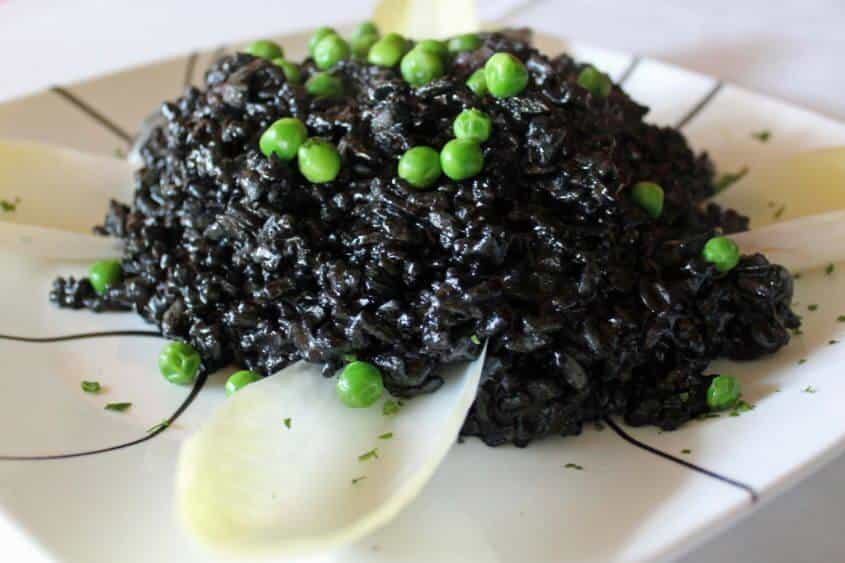A little food for thought
It’s a heavy night in the kitchen, orders are piling up faster than the dishes in the sink.
‘Chef, I need one rice. And I need some stock, some onion, a bit of garlic, a few mushrooms, some parmesan and a sprig of thyme’.
The chef pauses. ‘So, er, you need a risotto?’
The waiter looks blank. ‘A what? No, I need all those things individually. It’s just that I then need them combined in a pan in the right quantities and then served on a plate’.
The chef mutters under his breath – ‘imbecile’ – as he starts preparation of what promises to be a beautiful risotto.
This little vignette is of course somewhat farcical (well, to an extent – chefs do tend to think that waiters are imbeciles). But if this story is so obviously a joke, then how is it that within marketing we still seem to talk like this? We adhere to rigid titles for different activities; branding, PR, digital, social media, content – and we become very precious about our specific domains and the idea that they shouldn’t be interfered with by the others.
A gradual wake-up within the communications industry is occurring, and it is becoming more frequent to hear of the concept of ‘integrated marketing’ strategies – in which the efforts of each of the marketing channels are integrated and coordinated to create a harmonised message, and to multiply the impact achieved by any given activity on its own. Whilst we here at Xpresso have understood the vital importance of viewing PR activities as a wider part of an integrated approach, not everybody is quite on board yet; Robert Rose – for the Content Marketing Institute – identified that 85% of his B2B clients felt they were making a lot of noise online, but that it was either failing to coordinate in a meaningful way, or – worse – was competing with other functional areas. SMART insights identified that only a third of firms had a coherent, integrated strategy across their marketing activities.
Even more problematically, the ‘new(ish) kid on the block’ – content marketing – is treated as separate even by those firms foresighted enough to understand the importance of an integrated approach. Content marketing does occupy a difficult conceptual position – the marketing team often think of it as product, the product team are convinced it must be marketing, and people pass it around like a hot potato not knowing who needs to do it or where it needs to be done.
Indeed, James O’Brien of Contently gives a definition that highlights this tension: ‘The idea central to content marketing is that a brand must give something valuable to get something valuable in return. Instead of the commercial, be the show. Instead of the banner ad, be the feature story’. So who was responsible for phoning up google to place a banner ad? Well, fire him, we need to hire Rupert Murdoch. Who was going to get that commercial airtime sorted? Because now we kinda need them to go and speak to James Cameron about commissioning a film. George Lucas would do at a pinch.
Herein lies the problem. Content marketing really isn’t – or at least shouldn’t be – a discrete discipline. Instead, it is a tool that can be used by other marketing functions, and most vitally, can be used to tie them together, give them coherency and act as a key touchpoint that sparks engagement with other marketing channels. As Robert Rose indicates: ‘content marketing is best served as an integrated infusion into a broader marketing strategy – a multiplier. Content marketing is the opportunity to make everything we do better’.
The key to doing this well is to understand how customers engage with your firm’s marketing channels, and then leverage content marketing to enhance this. Content marketing isn’t about churning out the content you want to churn out, it’s about providing what your customers are calling for. Time needs to be spent identifying who and what influences your customer as they move towards a product purchase – online influencers, journals, papers and conferences, press – and then building suitable content in these domains. Chefs don’t go slinging out steaks willy nilly, they wait to hear what the customer would actually like – so you shouldn’t start flinging out content randomly either.
Thus, for some – content marketing may be the rice; the base of your dish that all other marketing activities seek to add flavour to. Alternatively, content marketing may be stock – binding the dish together, or the thyme – a small but visible flourish on top. Hell, you might even be cooking a burger at this point, because everybody’s marketing strategy is going to differ according to their style and the taste of their diners. Wait, I mean consumers.
At this point, it may be best to leave the food metaphors behind. But the point is equally well expressed again by Robert Rose:
For many businesses, content marketing is but a small fraction of their overall integrated marketing, perhaps helping one aspect of a broader strategy. For other companies, it may be the vast majority of what they do. Your balance is uniquely yours as part of your strategy.
The key word there is balance. Content marketing should not be seen as a gimmicky ‘extra’ marketing component, discrete and separate from the ‘real’ stuff. Instead, it should be a key, core and integrated ingredient – a planned part of the overall recipe – that enhances all other communications, PR, and marketing activities.
The big question is then, what marketing strategy are you going to cook up next?








